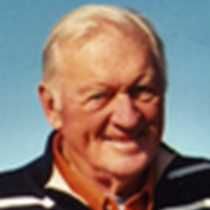Astoria, Oregon
Blustery weather is no stranger to the Columbia River mouth, and today was no exception. However, within three hours the sun’s rays cooperated.
The first stop was the Columbia River Maritime Museum, a world-class establishment that describes in many ways the exciting Columbia River story of shipwrecks and early struggles to cross the infamous sand and silt bar, sometimes known as “the graveyard of the Pacific.” After an hour at the museum, the historian and naturalist narrated historical and botanical details about the oldest (1811) United States city west of the Rocky Mountains while driving to Fort Clatsop.
During the Fort Clatsop visit, site of the 1805-1806 Lewis & Clark winter camp, guests were hosted by U.S. Park Department Rangers who accompanied visitors through the reconstructed fort. Guests then took short walks to Canoe Landing on the Netul River (now called the Lewis and Clark River) or returned to the Visitor Center. Fort Clatsop has a small museum highlighting Lewis & Clark and Clatsop Indian artifacts. The nearby gift store is unique in that it holds the best collection of books for sale about the Corps of Discovery. James Ronda’s “Lewis and Clark Among the Indians,” recommended by the ship’s historian, was an afternoon best seller.
During the return trip to the river’s mouth (Fort Clatsop is 11 miles south of Astoria) the motor coaches meandered through commercial and residential districts boasting 72 homes and other buildings on the National Historic Register. A Sunday street fair was in progress downtown, drawing guests to take a close look at the old buildings, shops, and River Walk.
After lunch (a few guests tried out local restaurants, the remainder dined aboard ship) two motor coaches conveyed guests to: 1) the Astoria Column, and 2) a Pacific Ocean beach at Fort Stevens State Park. The Column offered a wide-angle view of the Columbia River bar and the Oregon and Washington coasts. At the beach guests experienced the westernmost point of the cruise and ogled the deteriorating superstructure of a wrecked ship, the “Peter Iredale.” (It’s worth noting that the 125-foot tall Astoria Column, erected in 1926 on Coxcomb Hill, was built by the Great Northern Railroad and New York philanthropist Vincent Astor, great grandson of John Jacob Astor, whose fur traders settled Astoria in 1811.)
In the late afternoon guests chose between relaxing aboard ship, revisiting the world class Maritime Museum, riding the riverside trolley, or shopping in town – two blocks from the ship. The last Recap was held before Captain’s cocktails and dinner, a perfect coda to the Sea Bird’s last 2005 Columbia-Snake River and Lewis & Clark cruise before a positioning excursion to Alaska’s Inside Passage.
Blustery weather is no stranger to the Columbia River mouth, and today was no exception. However, within three hours the sun’s rays cooperated.
The first stop was the Columbia River Maritime Museum, a world-class establishment that describes in many ways the exciting Columbia River story of shipwrecks and early struggles to cross the infamous sand and silt bar, sometimes known as “the graveyard of the Pacific.” After an hour at the museum, the historian and naturalist narrated historical and botanical details about the oldest (1811) United States city west of the Rocky Mountains while driving to Fort Clatsop.
During the Fort Clatsop visit, site of the 1805-1806 Lewis & Clark winter camp, guests were hosted by U.S. Park Department Rangers who accompanied visitors through the reconstructed fort. Guests then took short walks to Canoe Landing on the Netul River (now called the Lewis and Clark River) or returned to the Visitor Center. Fort Clatsop has a small museum highlighting Lewis & Clark and Clatsop Indian artifacts. The nearby gift store is unique in that it holds the best collection of books for sale about the Corps of Discovery. James Ronda’s “Lewis and Clark Among the Indians,” recommended by the ship’s historian, was an afternoon best seller.
During the return trip to the river’s mouth (Fort Clatsop is 11 miles south of Astoria) the motor coaches meandered through commercial and residential districts boasting 72 homes and other buildings on the National Historic Register. A Sunday street fair was in progress downtown, drawing guests to take a close look at the old buildings, shops, and River Walk.
After lunch (a few guests tried out local restaurants, the remainder dined aboard ship) two motor coaches conveyed guests to: 1) the Astoria Column, and 2) a Pacific Ocean beach at Fort Stevens State Park. The Column offered a wide-angle view of the Columbia River bar and the Oregon and Washington coasts. At the beach guests experienced the westernmost point of the cruise and ogled the deteriorating superstructure of a wrecked ship, the “Peter Iredale.” (It’s worth noting that the 125-foot tall Astoria Column, erected in 1926 on Coxcomb Hill, was built by the Great Northern Railroad and New York philanthropist Vincent Astor, great grandson of John Jacob Astor, whose fur traders settled Astoria in 1811.)
In the late afternoon guests chose between relaxing aboard ship, revisiting the world class Maritime Museum, riding the riverside trolley, or shopping in town – two blocks from the ship. The last Recap was held before Captain’s cocktails and dinner, a perfect coda to the Sea Bird’s last 2005 Columbia-Snake River and Lewis & Clark cruise before a positioning excursion to Alaska’s Inside Passage.




